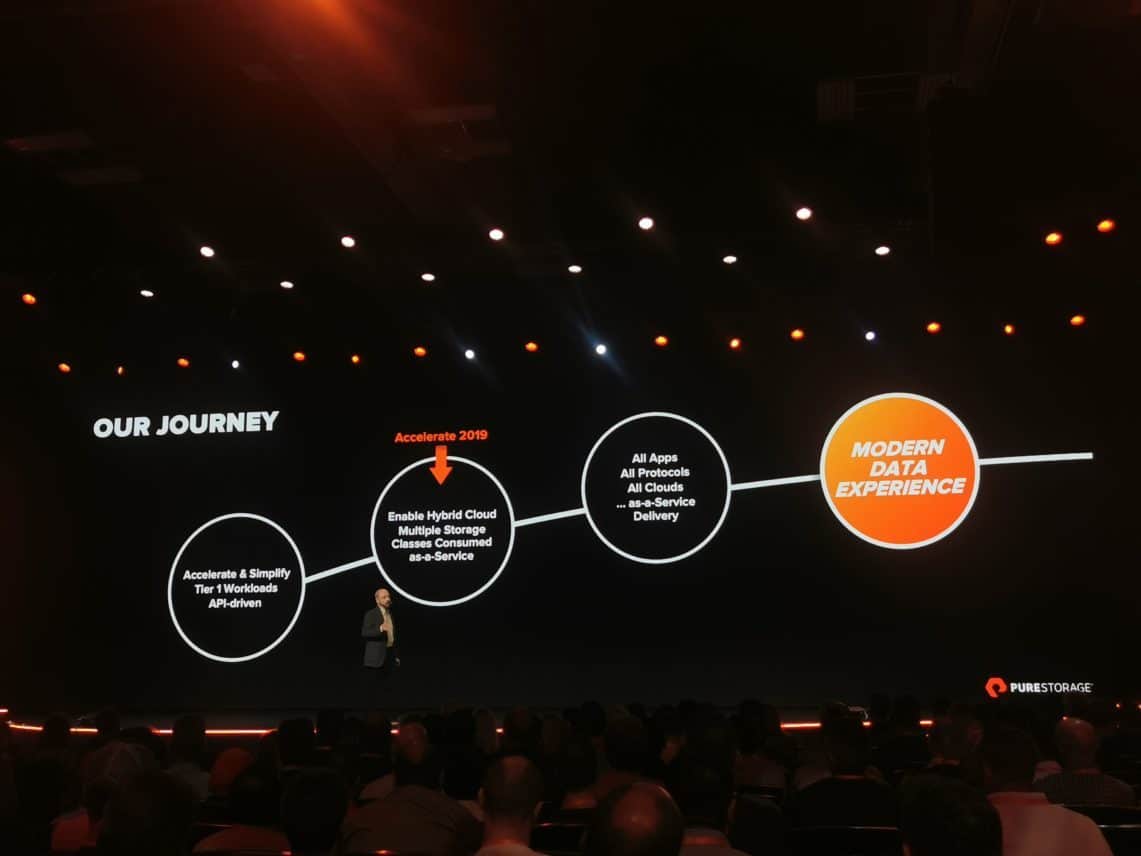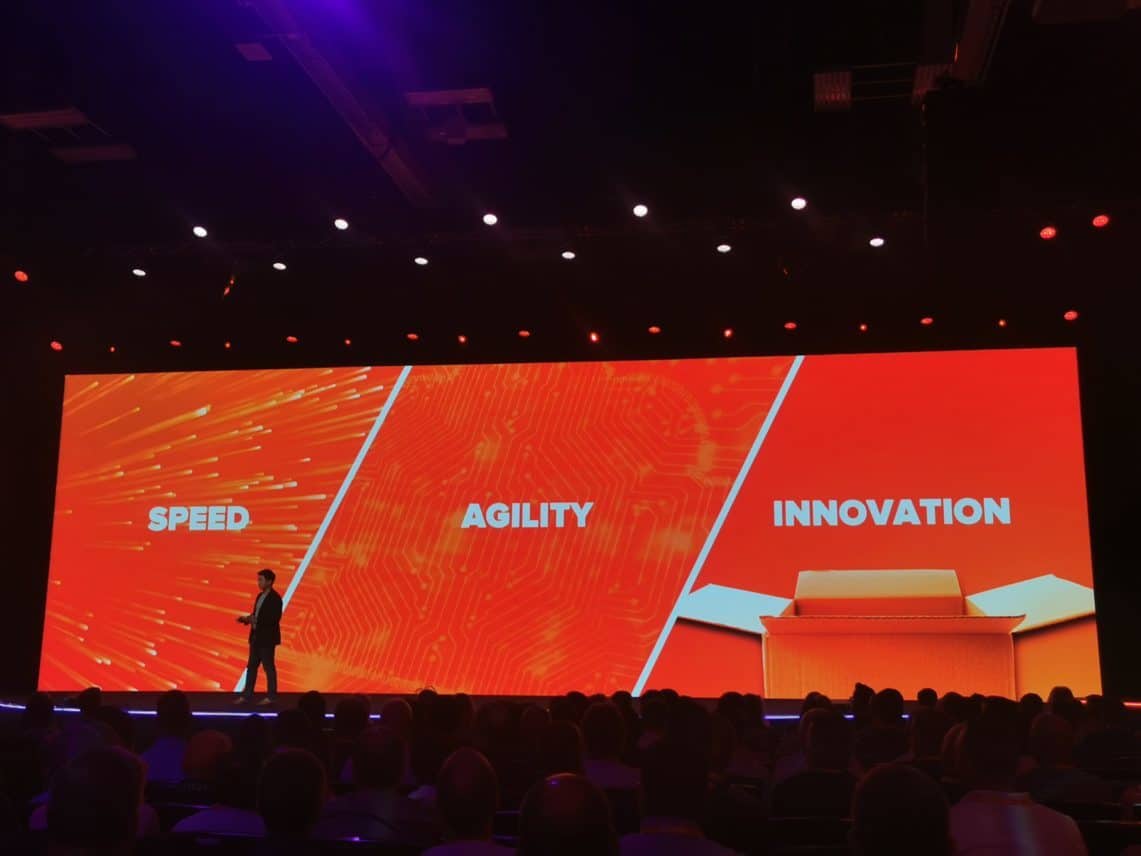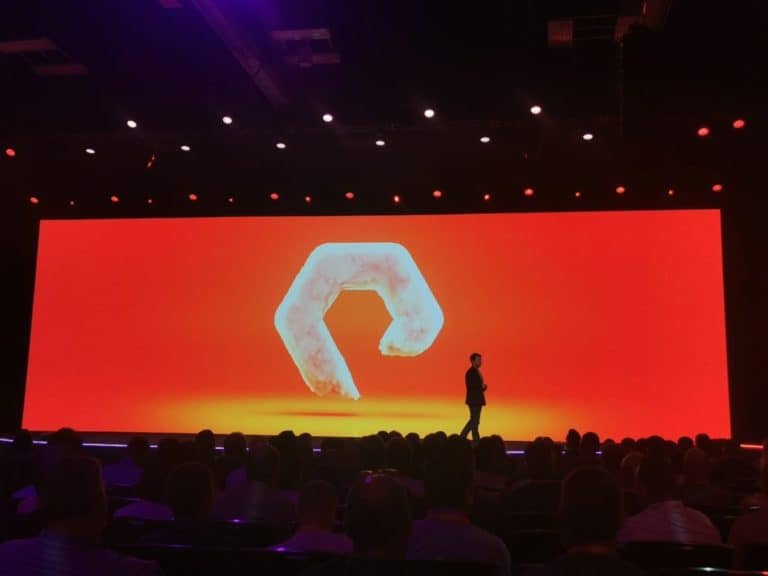Pure Storage has used its recent Pure Acceleration conference to discuss its future plans. Now that the company has been in existence for ten years, it wants to focus on what it calls a ‘modern data experience’ in the coming period: data storage that is Simple, Seamless and Sustainable. The virtualisation of data storage plays a major role in this. With its storage services, Pure Storage can already deliver a modern data experience. But the modern data experience can mean even more for users, as the company honestly acknowledges. The coming years will, therefore, contribute to shaping and further supporting the vision.
In the ten years of Pure Storage’s existence, the company has grown into one of the more important players in the storage market. The all-flash approach appeals to various enterprise organizations, as they believe in the performance and speed improvements compared to disk-based infrastructure, among other things. Pure Storage sees its flash storage hardware and software as unique in the market, as it only offers all-flash and does not come from a ‘legacy era’.
In recent years, the focus has been on optimising the all-flash arrays that Pure Storage provides, plus a number of issues related to these products. Now that Pure Storage has a solid product line in this area, it is time for the company to look at what it wants to achieve in the coming years. The answer of the company has is the virtualisation of data storage.
Other infrastructure components are already virtualized, data storage is next
During a keynote, CEO Charles Giancarlo sketched a picture of what virtualisation has brought about. The way IT professionals think about compute, storage and networking have been changed by virtualisation. It is no longer necessary to buy a server for every application. Instead, a server is split up into several parts, so that the capacity is divided. As a result, IT administrators have more computing power, memory and storage at their disposal.
Virtualisation has now reached several parts of the infrastructure stack, such as networking and servers. By virtualizing these components, companies can use resources for just about any application or environment they want. However, data has lagged behind in this area, in the opinion of Pure Storage. This obviously needs to change, as data is one of the most important assets of a modern company.
Because data storage is not sufficiently virtualized, it is very much tied to the IT stack or rack where it runs. As a result, basic data is not easy to move to other environments. Replication does make things possible in this area, but according to Giancarlo, this is not easy enough. In addition, it is questionable whether the data workload will continue to deliver the desired performance once it is running in a specific environment. If this is not the case, you will again encounter the fact that the data is difficult to move.
Modern data experience at the basis of a new era
In Pure Storage’s opinion, this storage process must and can be simplified. The company wants to achieve this by means of a storage pool, in which application programming interfaces (APIs) can claim different storage levels and characteristics. Within this process, there is room for artificial intelligence (AI), especially to control the management.
Pure Storage calls this approach a modern data experience. The modern data experience is, therefore, the vision for the coming years and consists of the three S-en Simple, Seamless and Sustainable.

More data should be easy to manage
Simplicity is perhaps one of the most easily explained pillars of the new vision. After all, the amount of data is increasing, and companies seem to realise more and more that they can derive value from that data. Storage suppliers have ti support this. It should not be the case that more data makes the process more complex.
Simplifying storage must, therefore, be done partly by making the architecture of the Pure Storage products fully ‘API-defined’. With APIs, claims can be made for the data. By putting a lot of effort into an API-defined architecture, the data exchange between storage and applications is thus made more flexible. Ultimately, applications must be able to call up data whenever they wish, instead of determining in advance what data is needed. By expanding the number of APIs, Pure Storage can offer more support for the exchange of data within the infrastructure stack in the long run.
Another simplification that Pure Storage will implement within the product portfolio is the focus on automation. This will be achieved by looking closely at how the storage systems, for example, by applications, are used. The systems are monitored for this with the help of AI and analytics. Ideally, this will result in an autonomous approach, in which software independently optimizes the performance for the unique situation. In order to release algorithms that can handle this completely independently, however, training still needs to take place. In this respect, complete automation does not seem realistic for the time being. However, AI and analytics can already do some work, after which a person assesses whether the system needs to be adapted and/or upgraded.
Seamless focuses on a ‘multi-approach’ for several components
Within the new strategy, there is one S where a lot of further development is expected in the coming years. With Seamless, the company strives to achieve a solid ‘multi-approach’ for the cloud, tiered storage and protocols. Pure Storage can already call certain parts multi-approach, but further steps are desirable.
For example, support for multi-client environments is something that many IT suppliers currently have to work on, as companies are using more and more platforms. New services and products are constantly being added to cloud platforms, for which IT vendors, in turn, have to build integrations and connectors. For Pure Storage, multicloud currently means it can provide some support, but it’s at the beginning of the multicloud era. The company works very closely with AWS, Microsoft Azure is high on the agenda for the coming period. In the long run, the company hopes to be able to supply its technology via any cloud provider, so Google Cloud and IBM Cloud are also on the horizon.
At Accelerate, Pure Storage made some announcements that demonstrate its commitment to cloud platforms. Purity, Pure Storage’s operating system for the all-flash storage arrays, can now run native on AWS. With Cloud Block Store for AWS, block storage is delivered from the cloud, using the same operating system as in on-premise environments. In addition, the array data protection tool CloudSnap has also been available on Azure for several weeks now. Until recently, this tool was only delivered via AWS, but is now also available via Microsoft Azure.
In addition, Pure Storage demonstrated its commitment to a multi-approach by unveiling a storage array, FlashArray//C, for tier 2 workload. This array is optimized for secondary data, i.e. data that is not directly used for important business processes. Examples the company gives are old Oracle applications and certain SQL Server data.

With FlashArray//X Pure Storage already had a good product for tier 1 applications, but with FlashArray//C all-flash storage becomes available for tier 2 workloads as well. The company claims to be the first supplier to offer a serious all-flash array for secondary storage. From a multi-approach point of view, however, it means that Pure Storage now realizes multitiering.
The last part that Pure Storage wants to make ‘multi’ is protocol support. For this, it will rely on extensive support for the protocols S3, Microsoft SMB and Network File System.
Sustainability is the basis for the modern data experience
Pure Storage has already mastered the last pillar of the modern data experience. With Sustainable, the company emphasizes one of the advantages that all-flash arrays try to realize. Organizations that use that kind of storage media use equipment that lasts longer than traditional disk-based storage equipment. In the case of disk-based storage, new equipment may need to be purchased after five years, as it becomes obsolete. This is less the case with all-flash storage, which makes it a more sustainable alternative.
However, with sustainability, Pure Storage also means being able to consume all its services and products ‘as a Service’, i.e. to purchase the products and services on the basis of a subscription model. Until recently, Pure Storage did this via the Evergreen Storage Service (ES2) program, which is already well developed. However, the offer is now called Pure as-a-Service, which means that there is no longer any confusion with the Evergreen programme of HPE.
Therefore, Pure Storage has a good basis in the field of sustainability. Components that achieve sustainability have been in development and available for some time now.
A solid basis on which to build
With data virtualization and a modern data experience, Pure Storage has given a preview of what we can still expect from the company. It has grown by bringing all-flash storage to data centers, but is expanding its products and services further. In the coming years, the expansion of the company’s footprint will continue because the three S-approach can still grow.
The message of Pure Storage is clear in that respect: the company is fully specialised in storage and wants to become even better at it. We are naturally curious to see how the modern data experience message will develop further.
